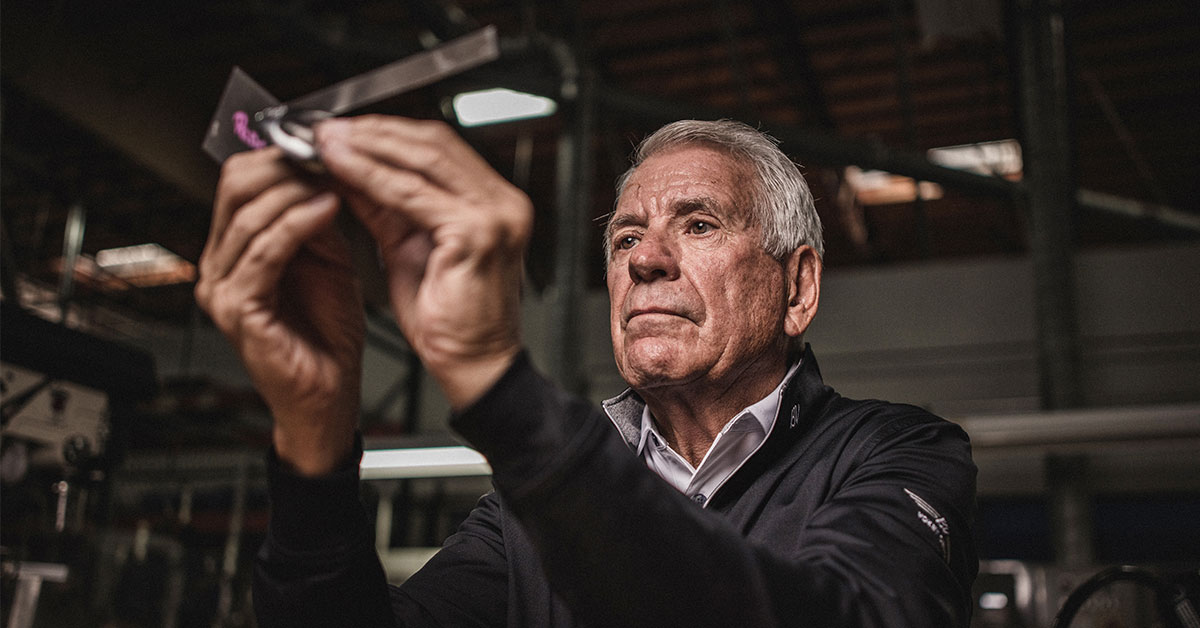After more than two decades in the business, wedge wonder Bob Vokey continues to make headway along the cutting edge of golf club design.
Here, he speaks to Australian Golf Digest about his career, and what’s next in wedges.
How long have you been designing wedges and how did you decide to specialise with this particular club?
I’ve been working with wedges since the early years in my old golf shop in Fallbrook. That would have been in 1976. I really started to focus on wedges after I joined Titleist in 1996. My first project was helping with the final shaping of the 975 D. Then Mr [Wally] Uihlein said that he wanted someone to take the lead on designing Titleist wedges, and I raised my hand. The past 21 years have really gone by quickly.
What key technology development do you feel has influenced wedge design the most?
There have been so many developments in wedges. But they all have one thing in common, the golfer. Originally, I worked a lot on the profile shapes with players, going back to my 200 series, 300 series, 400 series. Out on tour we spent a lot of time grinding wedges to suit particular players or conditions. This led to the grinds we have today.
Grooves have always been important for spin, whether it was the original Spin Milled wedges, or the score lines that conformed to the new conditions of competition rules, we are always working on score line development. And these past few years, centre of gravity has become a huge development, and really helped the performance of SM6 and SM7 wedges.
 What are you currently working on?
What are you currently working on?
Back in Carlsbad, we’re always working on new ways to help golfers hit better wedge shots. I spend six or seven weeks per year on tour gathering feedback from the best players in the world. I also do a lot of fitting at the Titleist Performance Institute. All these golfers provide feedback that we can then use in the development of the next wedge. I’m also travelling quite a bit to meet with golf professionals and amateurs to tell them how important it is to be fit for wedges.
What are the most effective features of the latest SM7 wedges?
The most effective feature of any wedge is to use the sole grinds to get fit for the right set of wedges. I believe wedges are the low hanging fruit in a players’ bag. Being properly fit can really help a player hit better wedge shots. The progressive CG is also improved. We’ve lowered the centre of gravity in the low lofts, raised it in the high lofts, and we’re more aligned with the impact position. A lot of players are telling me how much better SM7 feels compared to any of our other wedges.
What about your work through history are you most proud of?
I always loved the 400 series wedges. It was the first wedge that ever went into play in a PGA Tour event, back in 1997. So that was a great moment. But what really makes me proud is when a golfer at a tour event sees the name on the back of my hat (“Voke”), and they tell me how much Vokey Wedges have helped their game. That’s what really motivates me.

What do you think will influence the future of wedge design?
Our focus is golfers. As golfers continue to provide us feedback, this will most influence the development of wedges and how we continue to design new models. We listen to the players, and while I’d like to take credit for all of the grinds, it’s the players that tell me what they want a wedge to do. We continue to focus on them, and this helps us continue to improve our designs.
What are your views regarding technological restrictions in club design?
The USGA and R&A set the rules, and we will always conform to the rules of golf. It was a lot of work when the groove rule went into effect in 2010, but we learned a lot by working with our players to figure out the best way to design wedges with the new rules in place.
Read here for Hot List which lists the best wedges money can buy in 2019.
